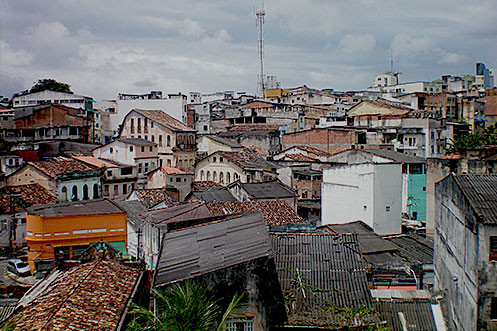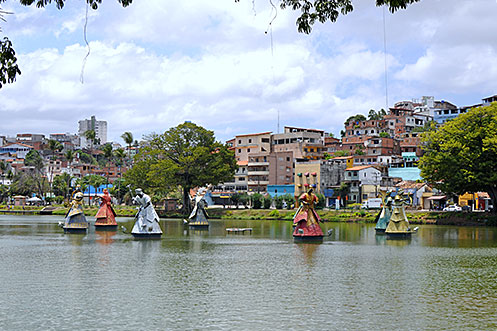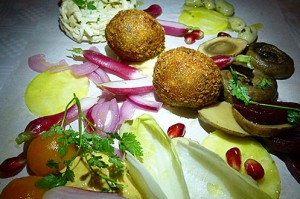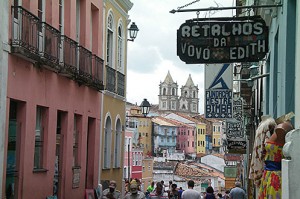Salvador, in North East Brazil, is one of the World Cup 2014 host cities but even if you’re not a football fan Salvador is full of hidden gems such as various Salvador candomble. By way of a brief explanation, the candomble is a religion found throughout Brazil. But it’s Salvador is where you’ll find its roots – it was introduced to Brazil by West African slaves. There are over 1000 terreiros de candomble (areas of worship) in Salvador. Genuine Salvador candomble (ie not those catering to tourists) are free (you can pay a donation) but you’d be hard-pushed to find them by yourself. And, as many of the Salvador candomble tend to be in poorer areas of the city I wouldn’t recommend it. This means the only real option is to book a pricey tour (we paid R80 each for the privilege).
We chose to visit the Casa Branca (White House) community. Said to be the oldest house of candomble it is currently located on the Avenida Vasco Da Gama. Before we were picked up we were told to dress respectfully in the colours of white and blue. It took about 30 minutes for us to get there by car from our pousada in Barra, passing the location for Salvador’s World Cup Stadium and the Digue dos Torrero park in the old part of the city, famous for a lake and statues of Orisha gods.
Practising candomble was banned in Brazil for centuries but the rituals and ceremonies are often described as a cross between West African and Catholic rituals. I’d come across various accounts of people becoming possessed at ceremonies so I was a bit nervous about what to expect. When we arrived we were made to wait outside while women scattered leaves on the floor of the room where the ceremony was to take place. Apart from our group of about 10 we were the only tourists there. The rest of the people attending this Salvador candomble were locals. And though it was a shame this Salvador hidden gem is still so secret we weren’t allowed to take photos it did make me feel this candomble had more credibility than some of the others.
Men and women are separated (women on the left, men on the right) so I wasn’t able to sit with Sharps. From our respective vantage points we were both able to witness the chanting and dancing. Both men and women dressed in white paid homage to one of the elders of this Salvador candomble. I was on tenterhooks each time they passed by (they moved round in a circle) waiting to see if someone was going to go in to a trance, but nothing. After what seemed like ages (it was probably about 40 minutes) we were ushered outside for the next part of the service – the food. I was terrified of being disrespectful as I knew that being vegetarian I wouldn’t be able to partake. Thankfully there is no obligation to eat. Food is distributed according to the hierarchy of the community, all the while with chanting and blessings taking place.
Then, we returned back inside for the final part of the ceremony, the bit I’d been waiting for. Prayers were being offered to the god of corn, the room was decorated with sheafs of cornflour. The next thing we knew people started chanting and throwing popcorn into the air. Some of the women participating in the ritual handed out handfuls of popcorn to those watching, while the rest of the group continued with their chanting and dancing. Suddenly it all got a bit Derren Brown-esque. I noticed a girl in the stalls near to me starting to shake, then collapse onto someone. Meanwhile from where he was sitting Sharps caught sight of a woman rolling her eyes and going into a trance (I have to admit the jury’s still out on that one). Unfortunately, just as it was getting interesting, our tour guide told us we were leaving (we’d been there for about 4 hours already). We would have stayed longer but we didn’t really fancy having to make the journey back by ourselves. Whether the trances are real or otherwise it’s still worth checking out a Salvador candomble. Attending one of these hidden gems is an experience in itself, and not one I’m not likely to get the opportunity to do again, except in my dreams.






